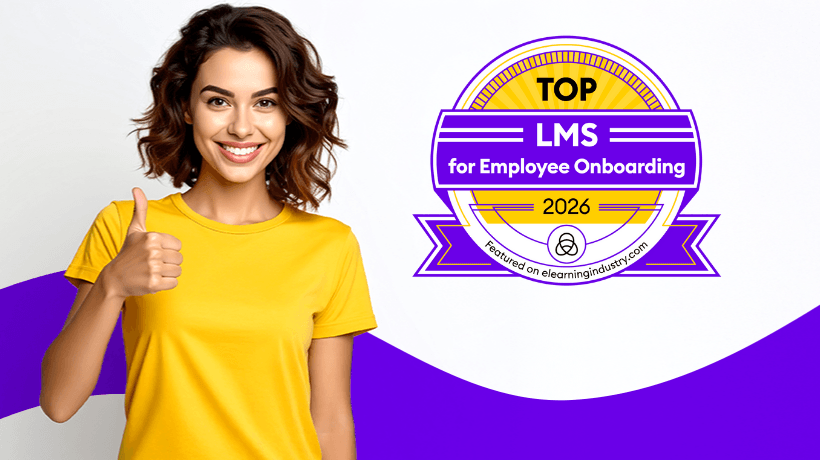Onboarding Software: How It Can Boost Employee Retention
You had spent weeks posting job vacancies on portals and managed to receive a handful of applications. After selection, back-and-forth negotiations, you have finally managed to select a suitable candidate.
Well, is it over?
No!
You also have to ensure the new hire stays around and is satisfied with their job. This is where the new employee onboarding software/program comes into the picture.
Joining a new organization can be stressful for some individuals. If employees start quitting their jobs after a small period of time, it can be very costly for the organization; forcing them to lay emphasis on onboarding.
According to a study, employees who receive a structured orientation process are 69% more likely to continue working for 3 years.
Most forward-thinking organizations craft an onboarding program with onboarding software to deliver content specially created for new employees.
Benefits of a clearly defined onboarding program:
- Assists in attracting and retaining top talent
- Engages employees from day one
- Assists in boosting business growth
- Builds trust and relationships
- Decreases employee turnover
- Improves employee retention rates
Why Use The Technology-Assisted Employee Onboarding Programs/Employee Onboarding Software?
In today’s changing work environments, organizations lay special emphasis on the Learning and Development of their human resources. Technology-enhanced learning processes create an agile and engaged workforce from start.
Tasks like induction, onboarding, training become easier to deliver, analyze, report and update with an organization-wide onboarding software.
A new employee onboarding platform can deliver pre-assigned learning modules automatically. The content can be created without any major investments and can be used multiple times including global audiences.
How To Integrate Technology Into Your Onboarding Programs?
Let’s have a quick look at some widely used methods of integrating technology in employee onboarding programs.
-
Video-Based Learning:
A widely used method to deliver demonstrative content for training programs. Pre-recorded videos about an organization’s culture, values or processes can be assigned to new hires.
-
Learning Management System:
Pre-assigned eLearning modules either in video formats or any other preferred format can be delivered to new employees via these organization-wide platforms.
-
Onboarding Software:
Specialized onboarding software capable of digital publishing can help organizations convert all their legacy content into interactive eBooks. This mobile-ready content can be enhanced with interactivity and multimedia resulting in improved engagement. Consumption of these modules can be tracked with analytics.
-
Blended Learning:
A combination of two or more methods to deliver content; Instructor-Led training as well as online learning or any combination an organization may see fit. An onboarding software capable of handling creating, publishing and securely distributing interactive digital content along with multimedia enhancements seems the most attractive option.
This same software can also be used to distribute training material throughout organizations.
So,
What Is Onboarding Software?
A tool that facilitates a smooth transition by streamlining the onboarding process for new hires and the organization.
Why Should You Use Onboarding Software In Your Employee Onboarding Process?
- Automated learning module delivery
- Content consumption and delivery analytics
- Performance management
- Progress reporting – set and achieve goals
- Feedback mechanism
- Better engagement and retention
- Flexibility for end users
How Will An Onboarding Software Improve Employee Retention Rate?
1. Automated Delivery
In most cases, for the initial days, new employees are idle and wait for further instructions or the onboarding process. This can be very uncomfortable for new joiners and a wastage of time and cost for organizations, due to inefficient utilization of human resources. Onboarding platforms can address it by enabling the professionals to create a repository of online modules for onboarding. They can instantly assign the modules to new hires for automated delivery without wastage of time. The sooner new employees consume the content, the sooner they can start working.
2. Engaging And Interactive Content
Standard onboarding material with minimum technology integration makes onboarding a tedious task for new employees, the completion of which is linked to performance appraisal. With onboarding platforms, all legacy content can be digitized and enhanced with interactivity like quizzes, videos, and gamification, making the process more engaging.
3. Learning At Their Own Pace
A major advantage of using eLearning as a mode of content delivery for onboarding is its inherent flexibility. With onboarding platforms, a repository of learning courses can be assigned to employees. These courses can be accessed by employees anytime from any device of choice.
4. Repository Of Resources
A repository of learning modules and other knowledge enrichment resources can be created and assigned to employees allowing continuous learning. Employees feeling unappreciated can be a reason for high employee turnover rate. With onboarding and continuous content delivery, L&D professionals can ensure that human resources are upskilled over their course of employment and internally promoted, and hence retained.
5. Personalization
Organizations create onboarding content and reuse the same for many years, making it outdated and irrelevant.
With the onboarding software, the creation of eLearning modules is effortless. These modules can be bundled up with standard modules and delivered to new joiners.
Conclusion
Onboarding and training are not only meant for upskilling and grooming of employees – essentially they are mutual relationship building activities undertaken by organizations.
Continuous learning ensures employees are upskilled and can function in changing job environments. It also ensures they are engaged and retained for longer periods. In exchange, organizations save on costs associated with recruitment and offboarding. This makes onboarding, as well as training, a part of an overall mutually beneficial L&D strategy.
Few organizations even today don’t understand the benefits of an onboarding and training program and skip the investment, due to the absence of any actual returns. Such organizations use outdated onboarding programs for years, but expect employees to stay updated and be productive even in changing work environments.








